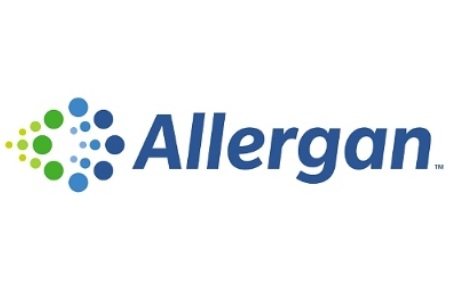
Three key pieces of data hit press in the biotechnology space on Tuesday from Array BioPharma Inc. (NASDAQ:ARRY) and Allergan plc (NYSE:AGN).
Here’s what happened with each.
Array
This one is rooted in a development program set up to investigate two of Array’s assets, encorafenib and binimetinib, in combination, as a potential treatment for patients with BRAF-mutant melanoma. The current standard of care in this indication is a drug called vemurafenib, which is marketed and sold by Roche’s (OTCMKTS:RHHBY) Genentech as Zelboraf.
The trial pitched the combination against the Array combination against a primary endpoint of reduced the risk of death as measured by overall survival (OS). This is pretty much the gold standard when it comes to these sorts of combination studies, so a positive readout would be great news for Array – especially given the severity of this indication and the relative lack of efficacy associated with the Zelboraf.
The company reported that the combination reduced the risk of death as compared to Zelboraf treatment by 39% (HR = 0.61). Median OS was 33.6 months compared to 16.9 months for patients treated with vemurafenib.
The application is already with the FDA and a PDUFA is in place, with June 30, 2018, slated as the target date. This latest news reinforces the strength of the application and markets are responding as might be expected – trading up on Array on the back of the release.
At the close of play on Tuesday, Array was up 16% on its preannouncement capitalization, trading for $16.28 a piece.
Allergan
This one is another phase III release, this time from a study called ACHIEVE (UBR-MD-01) – a trial set up to investigate the potential of a drug called ubrogepant in patients that suffer from migraines.
Unlike the Array trial, Allergan’s was set up to trial the investigator asset against placebo as opposed to an existing asset, primarily because this sort of trial allows for that. It would be unethical to have patients suffering from late-stage cancer take a placebo asset unknowingly.
The trial looked at two doses, a 50mg dose and a 100mg dose, with a primary endpoint of achieving pain freedom at 2 hours and a secondary rooted in achieving absence of the most bothersome migraine-associated symptom at 2 hours after the initial dose.
So what did the numbers tell us?
Again, this one turned out well.
Both the 50mg and 100mg doses showed a statistically significant greater percentage of ubrogepant patients achieving pain freedom at 2 hours compared to placebo (50 mg vs placebo, p=0.0023, 100 mg vs placebo, p=0.0003), so the primary endpoint is classed as hit and the p values reinforce the strength of this hit.
Similarly, and in line with the secondary endpoint, a statistically significant greater percentage of ubrogepant patients achieved the absence of the most bothersome migraine-associated symptom at 2 hours after the initial dose as compared to placebo patients (50 mg vs placebo, p=0.0023, 100 mg vs placebo, p=0.0023).
So that’s a strong hit on both counts and, given that this trial was a phase III, large-scale study, it’s a real feather in the cap for Allergan and its migraine candidate.
So what comes next?
The company wants to carry out at least one more phase III investigation looking at this asset (and likely again comparing it to placebo) before submitting a registration application to the FDA.
Expectations are that this trial will initiate at some point during the middle of this year and it will likely be expanded to a slightly lengthier timeframe than the first phase III trial spanned, meaning we’ll likely see data hit press at some point during the first half of next year.
Given Allergan’s market capitalization, it takes a lot to move the company to any significant degree. With that said, however, the latest data did bring about some degree of short-term boost, with the company closing out the session on Tuesday for a 2.2% premium to its market open price on that day.
Like this piece? Check out this one next: Bristol-Myers Squibb, Spectrum Just Reported Key Late Stage Data





